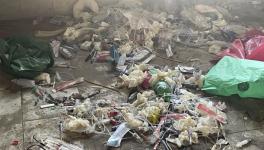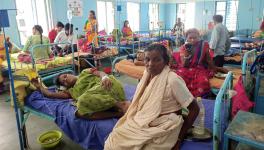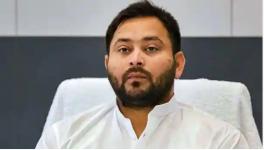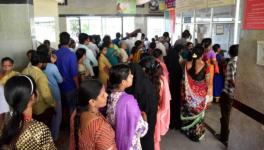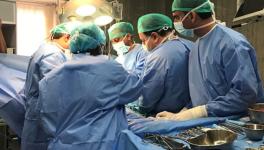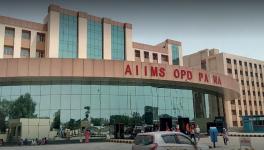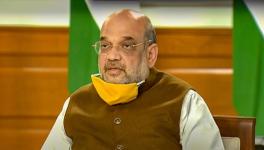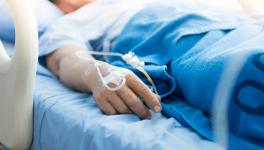Over-Worked Government Doctors and ‘Normalisation’ of Violence
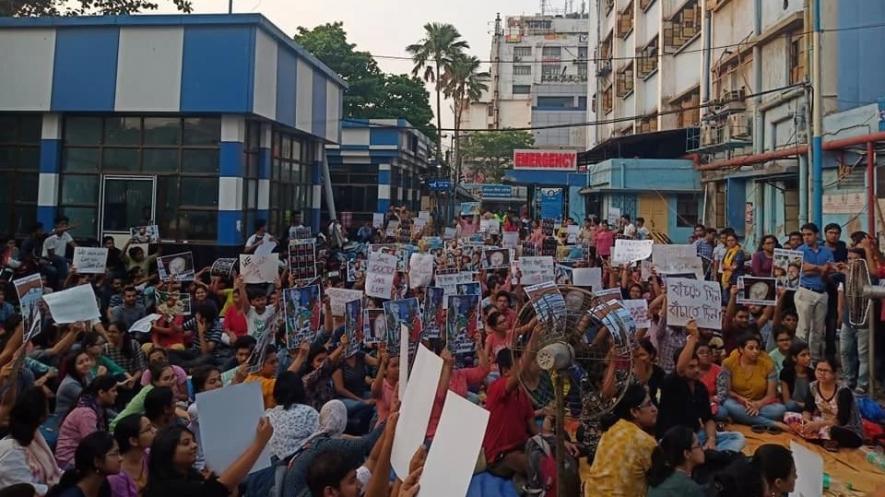
We are doctors and we aren’t doing so well. In the nth such incidence in West Bengal, this time at NRS Medical College and Hospital, one of our colleagues was grievously injured following an attack by a 200-strong mob apparently made up mostly of ‘relatives’ of an elderly patient who had passed away earlier that day following a cardiac arrest even after the doctors on duty had administered all available life-saving drugs. The family claimed that their patient was neglected by the doctors and he passed away owing to medical negligence.
Soon after the death of this patient, the hospital received threats about an imminent attack by the aggrieved family members. The hospital authorities had informed the local police station regarding the threat and had asked for reinforcement. In spite of this, at about 11.30 p.m on Monday (10.06.2019) night, two trucks full of people and many men on bikes entered the hospital and attacked the doctors-on-duty. During this confrontation, Dr Paribaha Mukherjee suffered a head injury, which led to one of his cranial bones being fractured. His condition was serious and he was rushed to a private neurosurgical institute for more specialised care. He had to undergo emergency neurosurgery. Another doctor, Dr Yash Tekwani sustained rib injuries and was admitted in the ICU in NRS Medical College itself.
Following this incidence, the junior doctors in NRS Medical College, gave a call for ceasing all work, except emergency services. By the next morning (11.06.2019), this call was joined in on by junior doctors in government medical colleges across the state, causing the health services in the state to come to almost a standstill. Peaceful protest demonstrations were organised across states by junior doctors in different government institutions in solidarity with our colleagues at NRS Medical College. Popular support started building up in favour of the protesting doctors across social media platforms. The response we were getting was unprecedented, unlike any of the other times when protests have happened protesting violence against doctors. But, as was propagated in public that essential services were shut down, that was not the case – emergency was open 24×7, parallel OPDs were running in most places and indoor patients were being looked after adequately. The few deaths that were reported during this time were not due to the junior doctors ceasing work, they were cases where, doctors on duty had tried their best but eventually could not save the patient.
A common body was formed with representatives from all medical colleges across the state and certain demands were decided upon which would be at the fore of our movement. This was done on the first day of protests itself. The demands were as follows:
- We wanted our Chief Minister who is also the Health Minister of the state to go visit Dr. Paribaha Mukherjee at the hospital he was admitted in and stand in solidarity with his family in these trying times for them.
- We wanted action taken against the mob that entered NRS Medical College that night and that the actions taken against these perpetrators i.e. the offences they were being booked for whether they were bailable non-bailable offences, be made public.
- And finally, we wanted a written assurance regarding the steps the CM (who is also the Chief of Police) was going to take to ensure better security and safer working environments for us at the hospital.
But, on the day of the final meeting with the CM, the demands that our representatives went in with also talked about larger problems in the public healthcare system and these were discussed on live TV and we were assured by the CM that steps shall be taken in this regard.
As is evident, our movement was motivated by our insecurity at our place of work. We were exasperated by the normalisation of violence against healthcare personnel in the workplace, more often than not, due to no direct fault of the personnel. But eventually, the movement and its demands were for revamping the public healthcare system, more than anything else.
The West Bengal government advertises that it offers free healthcare in all government establishments across the state. It does. But the nature of delivery of this free service remains questionable. We are often short of essential medication and essential equipment, like gloves among other things. Often patients require critical care management but owing to limited beds in the ICUs and ITUs and a long waiting list, critical patients have to be managed in general wards, requiring interventions often beyond the capacity of these wards. Diagnostic tests are also provided free in government hospitals, but the queues for these are too long and the delay in receiving reports often means unwarranted delay in initiating treatment. These are all administerial or infrastructural failures. These delays and helplessness often leave the patients and their family members irate. And often this displeasure finds itself being expressed in scuffles between healthcare personnel and relatives of patients.
The incident in NRS Medical College wasn’t the first of its kind. Not in the state, country or even the world. Well-known medical journal, The Lancet, has been raising concerns regarding increasing incidences of violence against healthcare providers since 2012. Studies in Great Britain and the US in the 1980s and 1990s, and a survey done in Germany in 2015 also found doctors at the receiving end of the anger of patients and their relatives. Although violence has been found in almost all types of workplaces, about 25% of the violence was found to be in the health sector alone! In 2000, a survey done in Brazil, Bulgaria, Lebanon, Portugal, South Africa and Thailand shows that more than 50% of doctors have been victims of physical or mental violence at least once in the past year. The World Health Organisation also took up a programme, to be run between 2010 and 2020, that addressed this particular issue.
But the question still remains as to why such incidents have been on the rise? Even though there exist laws in place to deal with such incidents and also government bodies, like the Clinical Establishment Commission in West Bengal, have been set up wherein one can come in and complain in cases where one feels that the institution was negligent in providing medical care. Some of the easily evident reasons are the increasing load on healthcare professionals owing to the ever-skewed doctor-to-patient ratio. Prior to 2011, more than 10,000 doctors were employed in the West Bengal government health services, but according to current reports, the number stands a little higher than 7,000. Owing to the ever-increasing workload and the extremely stressful nature of the job, young doctors often fall prey to the ‘Burnout Syndrome’. They develop apathy and disinterest in the work they do and are often suffer from mental health issues owing to the lack of time they have for themselves; they are unable to indulge in activities that would help them break away from this phenomenon.
Knowledge tends to alleviate one’s fears. We, those who were trained to identify signs and symptoms and suggest possible cure, are armed with this knowledge, but those who have not been trained are often confused and fearful of what could possibly be going on with them. A reassuring word or breaking down the ailment in simpler terms for patients, can more often than not calm them down. This, of course, is an ideal exchange. As mentioned earlier, doctors in our country are grossly overworked and taking extra time to answer some queries often seems like a luxury. As a result, there may be some lack of transparency in the exchanges between doctors and patients.
Now, comes the question of providing free healthcare to all. West Bengal is one of the states where treatment is absolutely free of cost. Medicines, tests, consultations, surgeries, everything is free. But this comes at a cost. The cost is waiting in queues, ever-running out of supply and indeterminate delay. To avoid these hurdles, a lot of the patients who come to government hospitals in the out-patient departments, end up spending a large sum of money from their pockets. And in government healthcare institutions, patients who avail out-patient services vastly outnumber the indoor patients.
It may not be out of place here to also talk a bit about the extremely unfortunate loss of over a 100 innocent lives in Muzaffarpur, Bihar. This isn’t the first time the region is experiencing such an outbreak. A mysterious syndrome characterised by fever, headache, nausea and altered consciousness, was first encountered in Muzaffarpur in 1995. After research in our country, and also in other South East Asian countries where similar outbreaks were reported, the mysterious illness could be traced back to the consumption of litchi (lychee) fruit and the presence of certain enzymes in the fruit. Consuming the fruit alone wasn’t the cause, but it was also found that most of the affected children had skipped their meals the previous day, as a result, an acute hypoglycaemic episode manifested itself in the early hours of the morning, which is when most of the children showed the symptoms of the disease.
Since then, every year during litchi season, the government is supposed to run extensive awareness campaigns in the region to educate parents and children to ensure the least possible casualties. Skipping of meals has more often than not been traced back to the acute malnourishment of the endemic population and, more disturbingly, is associated with young children working on litchi farms and consuming the fruit as a quick snack owing to its easy access. This time, some reports have come to the fore suggesting that the government failed to run its scheduled awareness programmes in the area, which is being cited as one of the reasons for the large number of deaths. In this case, it is apparent that not only healthcare, governments have to strive to provide health for all. Setting up hospitals with ‘free’ treatment is not going to resolve all the issues that an ill-informed and largely illiterate country like ours faces. The seasonal outbreak in Muzaffarpur is a good example to make one understand what physicians meant when they said that there were various other socio-economic factors linked with the spread of the disease, like poverty and malnutrition.
Medical education in our country is still mostly based on learning up facts and reproducing these on the day of the exam. Our professors are not our professors alone, they have the larger burden of treating the numerous patients that come to teaching hospitals. A democratic atmosphere of discussion and debate doesn’t always exist either due to time crunch or lack of initiative. We almost never broach issues related to medical humanity, gender sensitivity and understanding the composition of our society. Funnily enough, our holy grail textbook, Harrison’s Principle of Internal Medicine, has an initial section entirely devoted to the humane nature of medicine.
The lessons that I, and I hope the rest of my fraternity, did learn from organising this movement was that, as a community, we have to actively start working towards salvaging the relationship between doctors and patients. Our heart is in the right place, as was proved by the discussion with the Chief Minister on live TV news wherein for most of the time our representatives brought up issues that, if worked out, would help provide better healthcare services to those who come to avail them. In the recent past, we have been pitted against each other in the ‘Us vs Them’ battle which doesn’t help either. Patients make up the most important part of our jobs, and to say that we discriminate against them based on their surnames, is a baseless allegation. The media has a large role to play in setting up this narrative, as was seen recently when as reporter and crew of a national TV news channel found it appropriate to question a clearly over-worked doctor-on-duty in one of the hospitals in Muzaffarpur, standing inside the ICU.
A movement like the one by junior doctors recently, with national solidarity, has brought the public health system in the limelight. Panellists have come together on prime time television to discuss the crumbling system and, most importantly, doctors have found the need to talk about people’s health. If debates and discussions like this continue, we can hope to have a more efficient and functional public health system.
The movement that started in Bengal has faced much criticism on various counts, one being its ‘apolitical’ nature. I would like to end with something one of the original physicians, the father of modern pathology, Rudolf Virchow, had to say, "Medicine is a social science, and politics is nothing else but medicine on a large scale. Medicine, as a social science, as the science of human beings, has the obligation to point out problems and to attempt their theoretical solution: the politician, the practical anthropologist, must find the means for their actual solution... Science for its own sake usually means nothing more than science for the sake of the people who happen to be pursuing it. Knowledge which is unable to support action is not genuine – ... If medicine is to fulfil her great task, then she must enter the political and social life... The physicians are the natural attorneys of the poor ...." (brought to my attention by a Facebook acquaintance).
The writer was part of the junior doctors’ movement in West Bengal that made headlines recently. The views are personal.
Get the latest reports & analysis with people's perspective on Protests, movements & deep analytical videos, discussions of the current affairs in your Telegram app. Subscribe to NewsClick's Telegram channel & get Real-Time updates on stories, as they get published on our website.









